 Facebook
Facebook
 X
X
 Instagram
Instagram
 TikTok
TikTok
 Youtube
Youtube
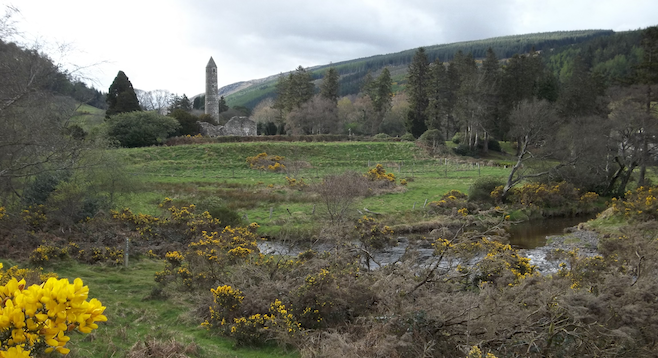
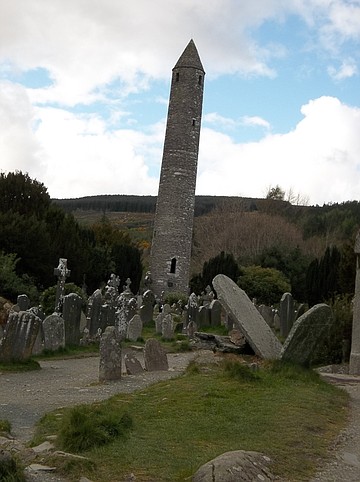
As I walked near the mist-shrouded lakes beyond the ruins of the Glendalough monastery, it was easy to imagine there were magical creatures just beyond my field of vision. A misty morning stroll past the monastery along the fields and lakes of Glendalough enchants the imagination and may well conjure up visions of assorted unearthly sprites.
A mystical ambiance endures, as if the monks that lived here three centuries ago imbued the site with an ethereal power that hovers over the ruins, hills and lakes. In the early morning and late afternoon, once the crowds have dwindled, there's a quietness here that is conducive to serene contemplation.
Nestled in the Wicklow Mountains (the word Glendalough itself means "valley of two lakes"), Glendalough was originally founded by St. Kevin in the 6th century. It is said that as a boy Kevin bonded with the animals of the area in a manner reminiscent of St. Francis and went to live in the hollow of a tree. He eventually attracted a small group of ascetic followers to commune with God in the remote outpost. This sowed the seeds for a burgeoning monastic community.
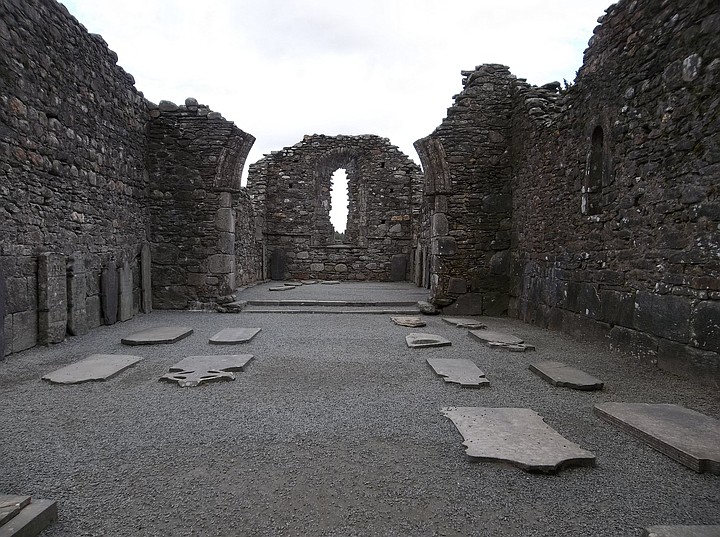
Glendalough flourished as one of the leading monasteries and centers for learning in Ireland until the 13th century. The cathedral at Glendalough, constructed between the tenth and thirteenth centuries, was the largest building on the site. Ruins of St. Kieran’s Church and St. Kevin’s Church remain, along with a reconstruction of the Priest’s House. The most recognizable landmark at Glendalough is the 110-foot-tall round tower (pictured above), a refuge in medieval times in case of an attack. The old graveyard on the site contributes to the mystical atmosphere.
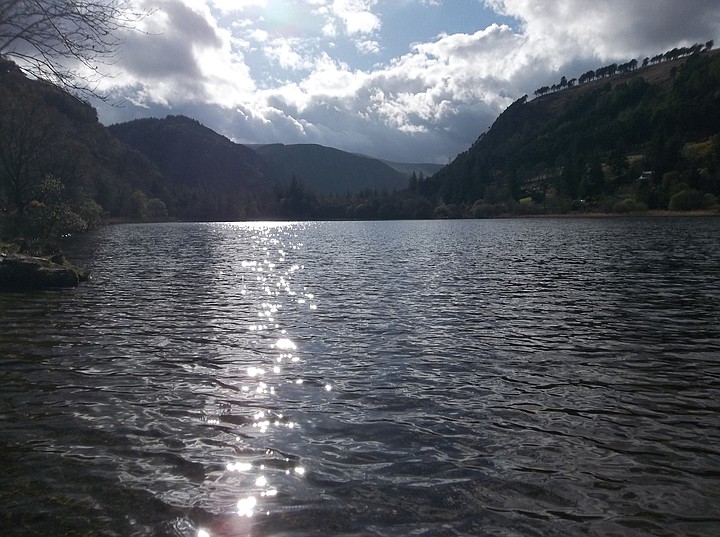
There are two lakes at Glendalough, the Lower Lake and Upper Lake. The visitor’s center and most of the ruins are closer to the Lower Lake, but hiking trails connect the two lakes for a worthwhile stroll. The area around the Glendalough ruins reminded me of the Lake District in England with its lakes and many hiking trails. The walks vary from easy strolls one can complete in less than an hour to more demanding jaunts along mountain trails.
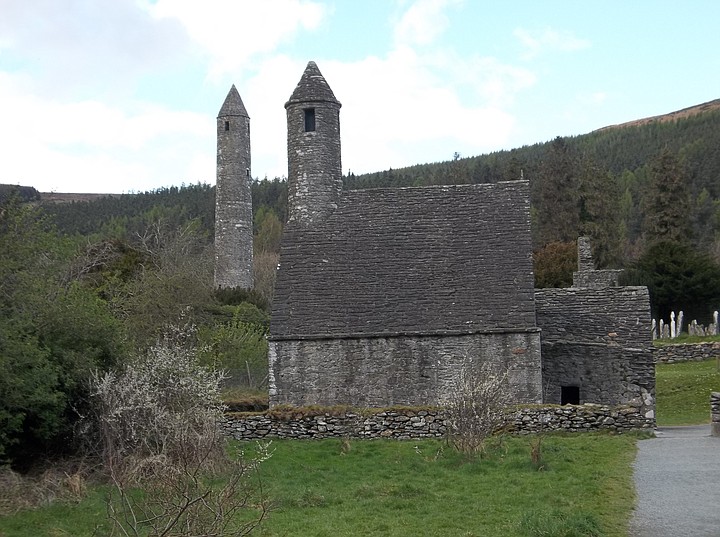
I recommend Glendalough as a worthwhile choice for one's first night in Ireland. I stayed in the Glendalough Hotel - comfortable, affordable and conveniently located adjacent to the ruins. After arriving in Dublin following a 10+ hour flight and steadily adjusting to driving on the left side of the road, the area's scenery, historical intrigue and serene ambiance were a welcome respite. Glendalough also makes a worthy day trip from Dublin and is just a two-hour drive from the airport. Along the way, stop at Powerscourt in Enniskey for a break to have a snack and a self-guided tour of the beautiful, expansive gardens.
Upon arriving in Glendalough, get rested after a long flight to fully appreciate the atmosphere. Find a solitary trail to bask in the silence that is the essence of Glendalough, and escape the tourists that tend to congregate around the ruins during midday hours. One only needs to be receptive here to find reflection, contemplation, regeneration and renewal – it's possible you might just emerge from this sacred spot a new person.



As I walked near the mist-shrouded lakes beyond the ruins of the Glendalough monastery, it was easy to imagine there were magical creatures just beyond my field of vision. A misty morning stroll past the monastery along the fields and lakes of Glendalough enchants the imagination and may well conjure up visions of assorted unearthly sprites.
A mystical ambiance endures, as if the monks that lived here three centuries ago imbued the site with an ethereal power that hovers over the ruins, hills and lakes. In the early morning and late afternoon, once the crowds have dwindled, there's a quietness here that is conducive to serene contemplation.
Nestled in the Wicklow Mountains (the word Glendalough itself means "valley of two lakes"), Glendalough was originally founded by St. Kevin in the 6th century. It is said that as a boy Kevin bonded with the animals of the area in a manner reminiscent of St. Francis and went to live in the hollow of a tree. He eventually attracted a small group of ascetic followers to commune with God in the remote outpost. This sowed the seeds for a burgeoning monastic community.

Glendalough flourished as one of the leading monasteries and centers for learning in Ireland until the 13th century. The cathedral at Glendalough, constructed between the tenth and thirteenth centuries, was the largest building on the site. Ruins of St. Kieran’s Church and St. Kevin’s Church remain, along with a reconstruction of the Priest’s House. The most recognizable landmark at Glendalough is the 110-foot-tall round tower (pictured above), a refuge in medieval times in case of an attack. The old graveyard on the site contributes to the mystical atmosphere.

There are two lakes at Glendalough, the Lower Lake and Upper Lake. The visitor’s center and most of the ruins are closer to the Lower Lake, but hiking trails connect the two lakes for a worthwhile stroll. The area around the Glendalough ruins reminded me of the Lake District in England with its lakes and many hiking trails. The walks vary from easy strolls one can complete in less than an hour to more demanding jaunts along mountain trails.

I recommend Glendalough as a worthwhile choice for one's first night in Ireland. I stayed in the Glendalough Hotel - comfortable, affordable and conveniently located adjacent to the ruins. After arriving in Dublin following a 10+ hour flight and steadily adjusting to driving on the left side of the road, the area's scenery, historical intrigue and serene ambiance were a welcome respite. Glendalough also makes a worthy day trip from Dublin and is just a two-hour drive from the airport. Along the way, stop at Powerscourt in Enniskey for a break to have a snack and a self-guided tour of the beautiful, expansive gardens.
Upon arriving in Glendalough, get rested after a long flight to fully appreciate the atmosphere. Find a solitary trail to bask in the silence that is the essence of Glendalough, and escape the tourists that tend to congregate around the ruins during midday hours. One only needs to be receptive here to find reflection, contemplation, regeneration and renewal – it's possible you might just emerge from this sacred spot a new person.
Comments